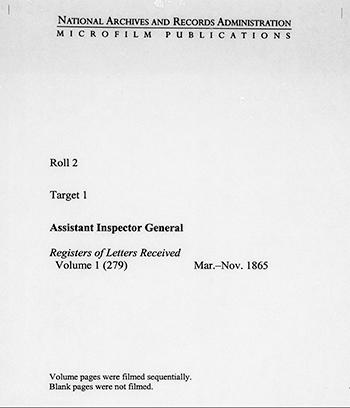Records of the Field Offices of the Bureau of Refugees, Freedmen, & Abandoned Lands
- M1483 Descriptive Pamphlet | Records of the New Orleans Field Office, 1865-1869
- M1875 Descriptive Pamphlet | Marriage Records of the Office of the Commissioner, Washington Headquarters, 1861-1869
- M1900 Descriptive Pamphlet | Records of the Field Offices for the State of Alabama, 1865-1872
- M1901 Descriptive Pamphlet | Records of the Field Offices for the State of Arkansas, 1865-1872
- M1902 Descriptive Pamphlet | Records of the Field Offices for the District of Columbia, 1865-1870
- M1905 Descriptive Pamphlet | Records of the Field Offices for the State of Louisiana, 1865-1870
- M1906 Descriptive Pamphlet | Records of the Field Offices for the States of Maryland and Delaware, 1865-1872
- M1907 Descriptive Pamphlet | Records of the Field Offices for the State of Mississippi, 1865-1872
- M1908 Descriptive Pamphlet | Records fo the Field Offices for the State of Missouri, 1863-1872
- M1911 Descriptive Pamphlet | Records of the Field Offices for the State of Tennessee
- M1914 Descriptive Pamphlet | Records of the Mississippi Freedmen's Department ("Pre-Bureau Records"), Office of the Assistant Commissioner, 1863-1865

